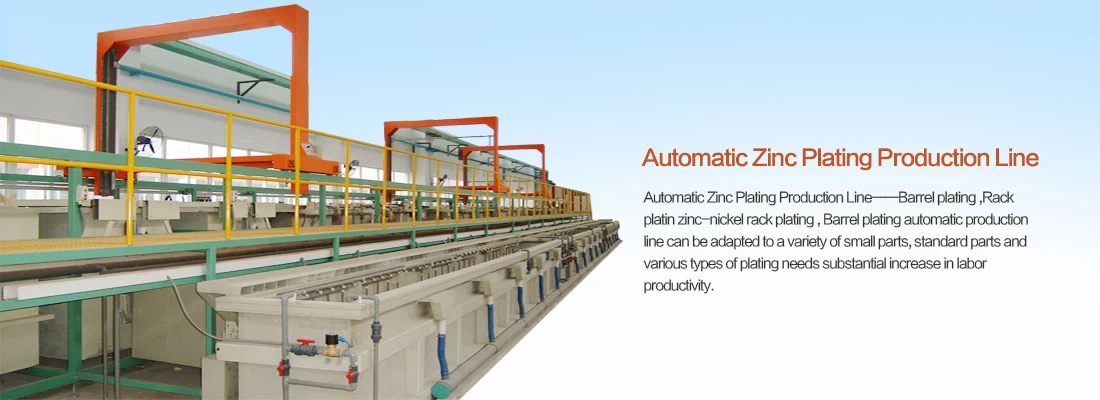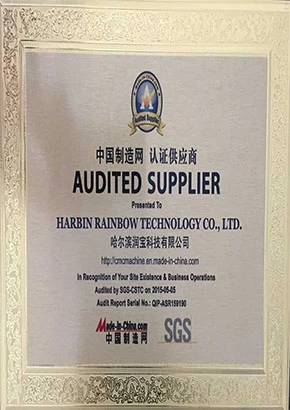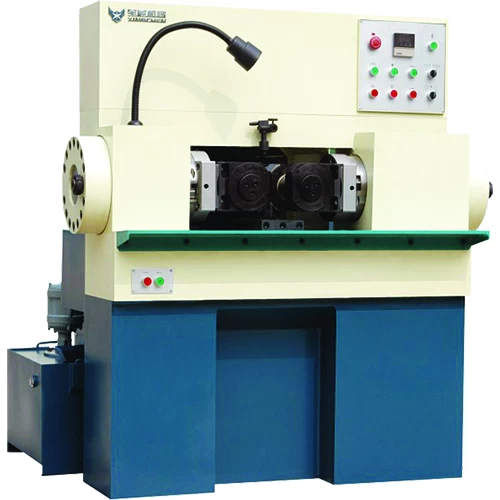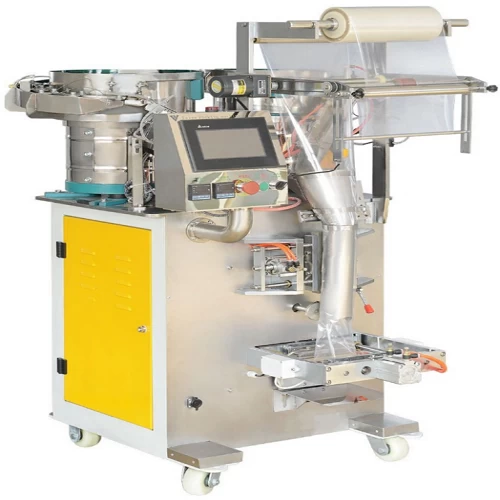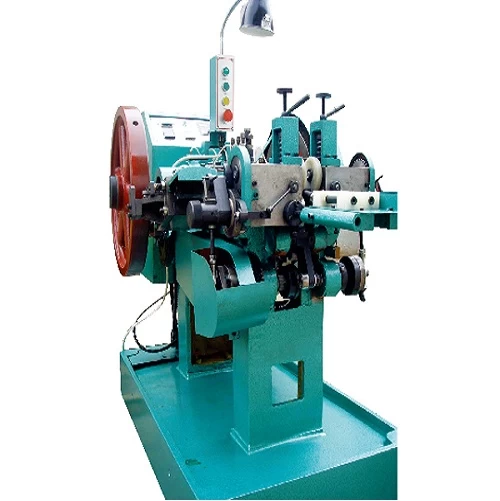Analysis on factors affecting accuracy of temperature, solution in this!
Changes in machine shop environment temperature, motor heating and mechanical movement friction heat, heat and the effect of cooling medium, resulting in uneven temperature rise of machine tool Department, resulting in changes of form accuracy of machine tools and Machining accuracy.
For example, on a general precision machining on CNC milling machine 70mmx1650mm screw 2:00-3:30 7:30-9:00 milling workpieces in the morning and the afternoon compared to the machining of the workpiece, accumulated errors of up to 85mm. And at a constant temperature conditions, the error can be reduced to 40mm.
As another example, one for double side face grinding 0.6~3.5mm thickness of thin sheet steel workpiece precision double disc surface grinding machines, in the acceptance process 200mmx25mmx1.08mm sheet steel workpiece mm can be achieved Inch precision bending length is less than 5M. Continuous and automatic grinding 1h, size range to 12m, the coolant temperature increased from when on the 17 c to 45 c. Due to the influence of grinding heat, leading to main Axle shaft elongation, spindle front bearing clearance increases. Accordingly, add a 5.5kW for the machine tool coolant tank refrigerator, the effect is very good.
Practice has proved that the machine heat deformation is influenced Machining accuracy of important reasons. But machine is at the temperature anywhere in the changing environment; the machine itself will consume energy at work, much of the energy will go into heat in various ways, causing every frame The physical changes, such changes because of different structures, material differences and other reasons vary. Machine tool designers should know the formation mechanism of thermal and temperature distribution, appropriate measures can be taken so hot deformation on plus To minimize the effect.
Machine tool temperature and temperature distribution
1. natural climate impact
China has a vast territory, most of the area is within the sub-tropical region, temperatures vary throughout day temperature changes are not the same. And so people indoors (workshops) temperature of the manner and degree of intervention does not , Machine temperature around the atmosphere vary widely. For example, the Yangtze River Delta area seasonal temperature variation range of about 45 degrees, day and night temperature of about 5~12℃. Machine shop the winters without heating, no air conditioning in the summer, but As long as the shop better ventilated, temperature gradient changes little machine shop. Northeast, seasonal temperature differences of up to 60 degrees centigrade, day and night about 8~15℃. From late October to early April heating period per year, machining Workshop design of heating, inadequate air circulation. Workshop temperature can reach 50 degrees centigrade. Winter temperature gradients within the workshop complex, measure the outdoor temperature at 1.5 c, 8:15-8:35, Workshop temperature changes of about 3.5 degrees centigrade. Machining accuracy of precision machine tools in the workshop will be much affected by the ambient temperature.
2. environmental effects
Machine tools ' refers to the surrounding environment close range to create thermal environment. They include the following 3 aspects.
(1) the microclimate of workshops: Workshop temperature distribution (vertical and horizontal direction). When the day follows night or climate change workshop and ventilation will produce slow temperature changes.
(2) plant heat source: solar irradiation of high power lighting, heating equipment and radiation, they are closer to the machine can directly effect for a long time in whole or in part the temperature rise of the part. Adjacent devices at run time to produce heat by radiation or the way air flow affects temperature.
(3) cooling: Foundation has better cooling effect, especially in precision machine tool Foundation do not close to the underground heating pipes, broken leakage, may become a hard to find cause of heat; open workshops will be a good "radiator" and workshop temperature balance.
(4) temperature: Workshop temperature facilities to precision machine tools to maintain precision and accuracy are very effective, but greater energy consumption.
3. machine tool thermal influence factors
(1) machine tool structural heat source. Motor heat such as spindle motors, servo motors, cooling and lubrication pump motor, electric control box can generate heat. This is allowed on the motor itself, but for Spindles, ball screws and other components in a material adverse effect, measures should be taken to be isolated. When you put electricity-driven motor, except for a few (about 20%) into motor heat outside, most of Into kinetic energy by the sports bodies, such as spindle spinning, table movement; but still a considerable part of the inevitable into frictional heating in the movement, such as bearings, guideways, ball screw and gear-box body to fever.
(2) the process of cutting heat. During cutting tool or the kinetic energy of the workpiece part consumed by cutting power, quite a few into deformation of the cutting heat and friction between chips and tools, forming tools, spindle and workpiece heating, and by a large number of chip components such as heat conduction to the Workbench of machine tool fixture. They will directly affect the relative positions between the tool and the workpiece.
(3) cooling. Cooling is the reverse measures according to temperature, motor cooling, cooling the spindle cooling and infrastructure and so on. High-end machine tools of electric control box equipped with refrigerator, forced cooling.
4. the effect of machine tool structure on temperature rise
In the field of machine tools thermal deformation of machine structure, usually refers to structures, mass distribution, material properties and distribution issues. Structure effect of temperature distribution and heat conduction direction, the direction of deformation and matching.
(1) the structure of the machine tool. In terms of structure, vertical, horizontal machine, gantry and cantilever type, thermal response and stability are quite different. For example gears of lathe spindle box temperature rise can be high Up to 35 ℃, spindle lift, about 2H in thermal equilibrium. Slant bed type precision lathe-milling machine has a stable base. Significantly improve the machine rigidity, spindle driven by servo motors, remove the Gear parts whose temperature is less than 15 degrees centigrade.
(2) effect of heat source. Think heat is often used to describe motor on a machine. Such as spindle motors, feed the motor and hydraulic systems
And so on, are not complete. The heat just bear the load of the motor, current consumption of energy in the armature resistance, another significant part of the energy consumed in the bearing, screw and nut Rails caused by frictional work, inter alia,
It's hot. So you can refer to the motor as a heat source, bearings, nuts, bearings and chip called a secondary heat source. Thermal deformation is a result of all of these combined effects of heat source.
One column vertical machining center in the y-direction to movement in temperature rise and deformation. Y feed table is not exercise, so the effect of hot deformation on x is very small. In the post, guide screws of the y axis more far away from the point, the temperature rise is smaller.
When moving on the z axis of the machine is even further illustrates the distribution of effects on thermal deformation. Feed further away from x to z axis, so the smaller thermal deformation effects, post nut from the z axis motor closer, bigger temperature rise and deformation.
(3) the effect of mass distribution. Effect of mass distribution on thermal deformation of machine tool has three aspects. First, the size and concentration of mass, usually refers to changes in heat capacity and heat transfer speed, changing the time to reach thermal equilibrium; Second, by altering the quality of the arrangement form, such as panel layout, improved thermal rigidity of structure, in the case of the same temperature, decreasing the thermal deformation, or remain relatively small; third, is by changing the quality features In the form, such as in the structure of external features cooling ribs in order to reduce the temperature of machine tool parts.
(4) effect of material properties: different materials have different thermal parameters (specific heat, thermal conductivity and linear expansion coefficient), also under the influence of heat, the temperature rise and deformation are different.
Thermal performance testing
1. thermal performance test the purpose of
Is the key to control of thermal deformation of machine tool by hot testing, fully understand the changes in ambient temperature of machine, the machine's own heat and temperature changes and key points of response (displacement). Thermal characteristics of test data, or curve to describe a single machine in order to take measures and control thermal deformation, improving processing accuracy and efficiency. Specifically, should meet the following objectives:
(1) machine tool environment testing. Measurement of room temperature, temperature gradient, changes of temperature distribution in alternating day and night, even should measure the impact of seasonal variation on the temperature distribution around the machine.
(2) thermal characteristic test of the machine itself. Eliminate environmental interference conditions as much as possible, put the machine in operation to measure temperature of the important points of the machine itself change, displacement, record the temperature over a long enough time period changes and key points of displacement, you can also use infra-red thermal heat distribution is recorded for each time period.
(3) the test temperature thermal deformation of machining process to determine the effect of thermal deformation of machine tool on machining precision.
(4) the pilot can accumulate large amounts of data, curves, control of thermal deformation for machine tool design and use provide a reliable criterion and point out the direction to take effective measures.
2. principle of thermal deformation of machine tools
Thermal deformation test you first need to measure the temperature of a number of relevant points, include the following aspects:
(1) source: including the parts feed motor, spindle motor, spindle bearings, guide rails, ball-screw drive.
(2) auxiliary devices: including hydraulic displacement detection systems, chillers, cooling and lubrication systems.
(3) mechanical: includes bed, base, skateboard, column and box and spindle milling head.
Indium held steel spindle and rotary table between probe, in the direction of x, y, z configuration 5-contact sensor, measurement of deformation in the various States to simulate the relative displacement between the tool and the workpiece.
3. test data processing and analysis
Thermal deformation of machine tool test to be carried out in a long continuous period, continuous data logging, analysis, reflect the characteristics of thermal deformation of high reliability. Errors if the experiment removed shown regularities were credible.
Thermal deformation test of spindle system 5 measurement points were set up, point 1 and point 2 in the spindle end and near the spindle bearing, point 4, point 5, respectively, in the milling head shell closest to z guide rail. Test time lasted 14h, with alternating within the former 10h spindle speed 0~9000r/min speed, starting from 10h, the spindle continues to 9000r/min high speed. You can get the following conclusions:
(1) the heat balance of spindle time about 1h, equilibrium temperature change range 1.5 ℃;
(2) temperature rise mainly come from bearings and spindle motors, in the context of normal speed, bearing good thermal properties;
(3) the effect of thermal deformation in x is very small;
(4) z-scale deformation 10m is caused by thermal elongation of the shaft and the bearing clearance increases;
(5) when the speed is 9000r/min, temperature rose sharply, by 7 degrees Celsius in 2.5h, and there is on an upward trend, y, and z to the deformation reached 29m and 37m stating that the spindle speed for 9000r/min has not run stable, but within a short time (20min).
Control of the thermal deformation of machine tool
From the above analysis, temperature rise and thermal deformation of machine tool on Machining accuracy of varied, control measures, should be the principal contradiction is grasped, to focus on one or two measures, achieve a multiplier effect. In design should start with 4 directions: reducing fever, lower temperature, structure, proper cooling.
1. reduce heat
Controlled is the fundamental measure. Measures to be taken in the design to reduce heat source of heat.
(1) select the nominal power of the motor. Motor output power p is equal to the product of the voltage v and current I, under normal circumstances, the voltage v is constant, so the load increased, meaning the motor output power Increases, the corresponding current I increases current consumption in the armature resistance of heat increases. If we select motor designed by long time in close or significantly exceed the rated power of the conditions, the temperature rise of the motor out Significant increases. To this end, BK50 CNC Groove milling machine milling head comparison test (motor speed: 960r/min; the ambient temperature: 12 degrees).
From the above test are the following concepts: from the heat source for performance, regardless of the spindle motor is feed motor, when you select a rating, better than 25% about greater computing power, in actual operation, the power output of the motor matches the load, increasing motor power rating for energy consumption is quite small. But can effectively reduce the motor temperature rise.
(2) to take appropriate measures on the structure, reducing the secondary heat source of heat, reducing temperature rise. For example: spindle structural design should increase before and after the concentricity of the bearing, high-precision bearings. Where possible, conditions, sliding Guide to linear rolling guideway, or linear motors. These new technologies can reduce friction, reduce fever, lower temperature rise. Metal fabrication of micro-letter content good, worthy of attention!
(3) in the process, the application of high speed cutting. Based on the mechanism of high speed cutting. When the cutting line speed is higher than a certain range, before plastic deformation by cutting metal, chip does not deform on hot, cut most into chip kinetic energy to be taken away.
2. structural balance, in order to reduce the thermal deformation
On the machine, heat is always there, further concern was how to make heat transfer speed and direction can reduce the thermal deformation. Or structure and has good symmetry so that heat transfer along the direction of symmetry, uniform temperature distribution, deformation and cancel each other out, becoming hot affinity structures.
(1) pre-stress and thermal deformation. In the feed system in high-speed, often using both ends of the ball screw shaft fixation, formation of tensile stress. For high feed to this structure, in addition to improving the dynamic and static stability, but for reducing thermal deformation error has a significant role.
Pretension in a full length 600mm 35m of axial feed rate of a fixed structure in different temperature rise under a closer comparison. Fixed pretension structure of cumulative error is significantly less than the other end of the cantilever fixed free tensile structure. Axially tensile structures at the ends, heating temperature rise was mainly caused by changing the screw stress changed its status from tensile stresses within the zero-stress or compressive stress. Therefore little effect on precision.
(2) changing structure, changing the direction of deformation. With different axial fixing structure of ball screw NC z Groove milling machine spindle slides processing requires the milled groove depth error 5M. Screw the lower axial floating structure in the processing of 2H, the groove depth gradually from 0 to 0.045mm. Instead, screw floating at the top of the structure is adopted, it will ensure the groove depth changes.
(3) the geometry of the structure symmetrical, can make consistent thermal deformation, the tip point drift minimize. For example, Japan Yasuda (Yasda) YMC430 micro-machining center of precision tools company is submicron high-speed machine, machine tool design on the thermal properties were fully taken into account.
First take perfectly symmetrical in structure layouts, columns and beams were integrated structure, h, or double-column structure, and has good symmetry. Approximate round spindle slides in portrait or landscape orientation is also symmetric.
3 moving axes are driven by linear motor feed drive, easier to achieve on the structure symmetrical, 2 rotary axes with direct drive, minimize the friction loss and the mechanical transmission.
3. proper cooling measures
(1) coolants in machining on Machining accuracy is direct. GRV450C-type double side face grinder comparison test. Tests showed that with refrigerator cooling heat exchange fluid handling, is very effective for improving processing accuracy.
Using conventional coolant supply method, 30min, size variance. After adopting the refrigerator, normal processing to more than 70min. 80min size is the main reason for the variance of grinding wheel Need to trim (remove metal shavings from grinding wheel surface), can be restored immediately after finishing processing precision. Effect is very apparent. Similarly, for forced cooling spindle can expect to get very good results.
(2) increase the cooling area. Add natural air cooling spindle box structure, for example area, in a well-ventilated room, can also have very good cooling effect.
(3) automatic chip in a timely manner. Time or real time temperature chips from the workpiece, the Workbench and tool parts, greatly facilitates the reduction of key sections of the temperature rise and deformation.
Outlook and vision
Control of thermal deformation of machine tools is an important topic in the field of modern precision machining, factors affecting the thermal deformations of machine tools is very complex. Moreover, modern machining of high speed, high efficiency and precision in all three simultaneously, machine tools Thermal deformations problems more prominent. Attracted the attention of machine tool manufacturing sector. Machine tools scholars at home and abroad to conduct a lot of research, in theory, considerable progress has been made. Study on thermal deformation of machine tool has become the machine base One of the theories.
From the machine tool design and application perspective of the factors affecting the thermal performance of machine tools, measuring and analysis methods and proposed measures for improving the design. Therefore, we believe that the optimal design of thermal performance of machine tools from the following aspects:
(1) the modern high-end machine tools design stage should pay attention to the design of machine tool by environmental conditions for future application.
(2) to control and configure the source of heat is the key. Controlled mainly refers to the control of energy consumption and power source match, new structure, reduce friction and heat sources and improve energy efficiency.
(3) to change the traditional thinking, cooling, lubrication, cooling and chip and other devices from the machine "auxiliary" component status to the "important" parts, cannot be taken lightly.
(4) attached to the structure design of thermal deformation for Symmetries and direction, to minimize effects of thermal deformation on the accuracy, with particular emphasis on the research and application of mathematical model of thermal deformation of the structure, in order to provide qualitative and quantitative indicators of thermal deformation control design.



